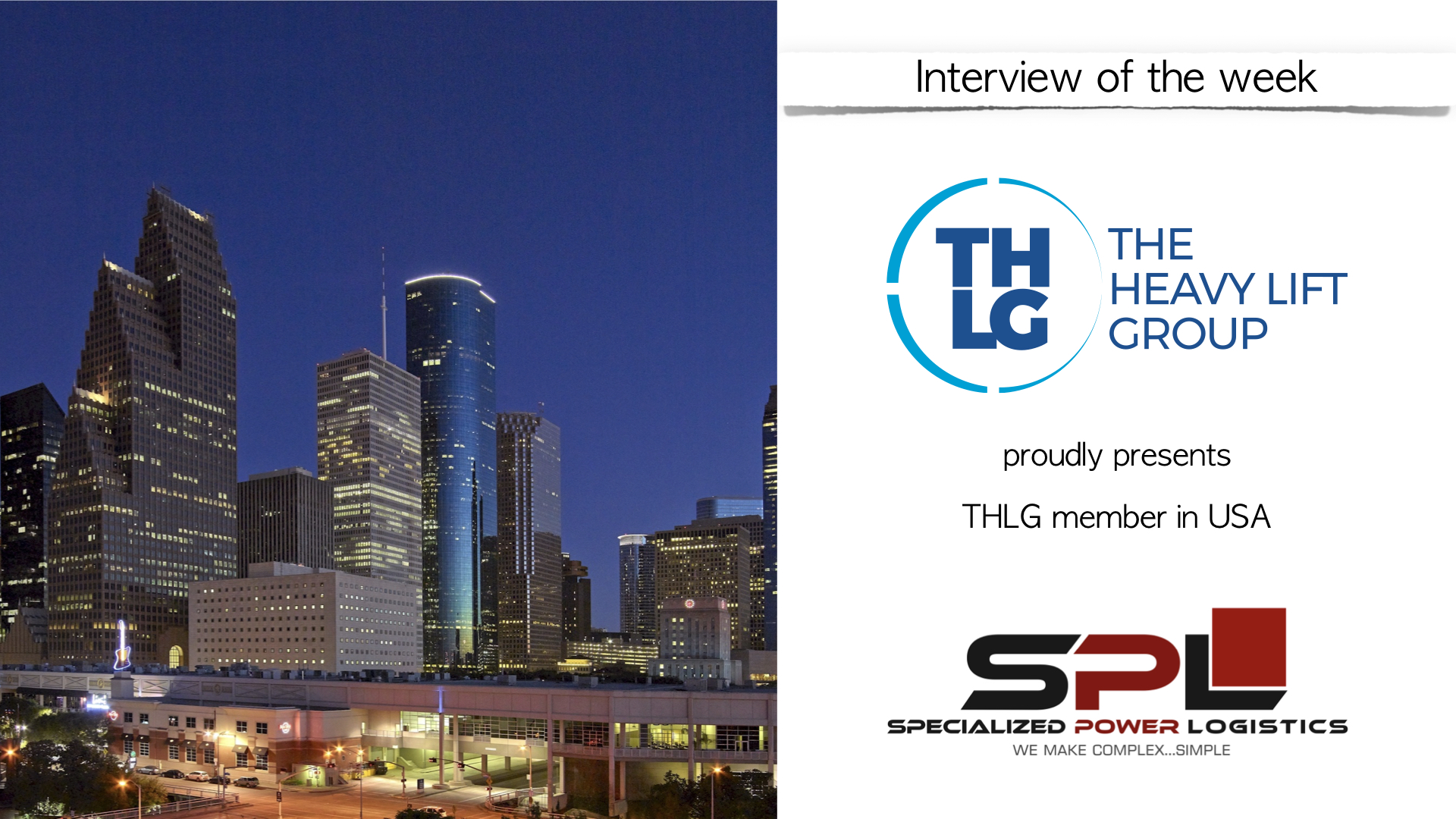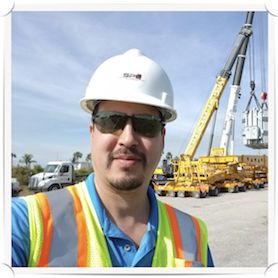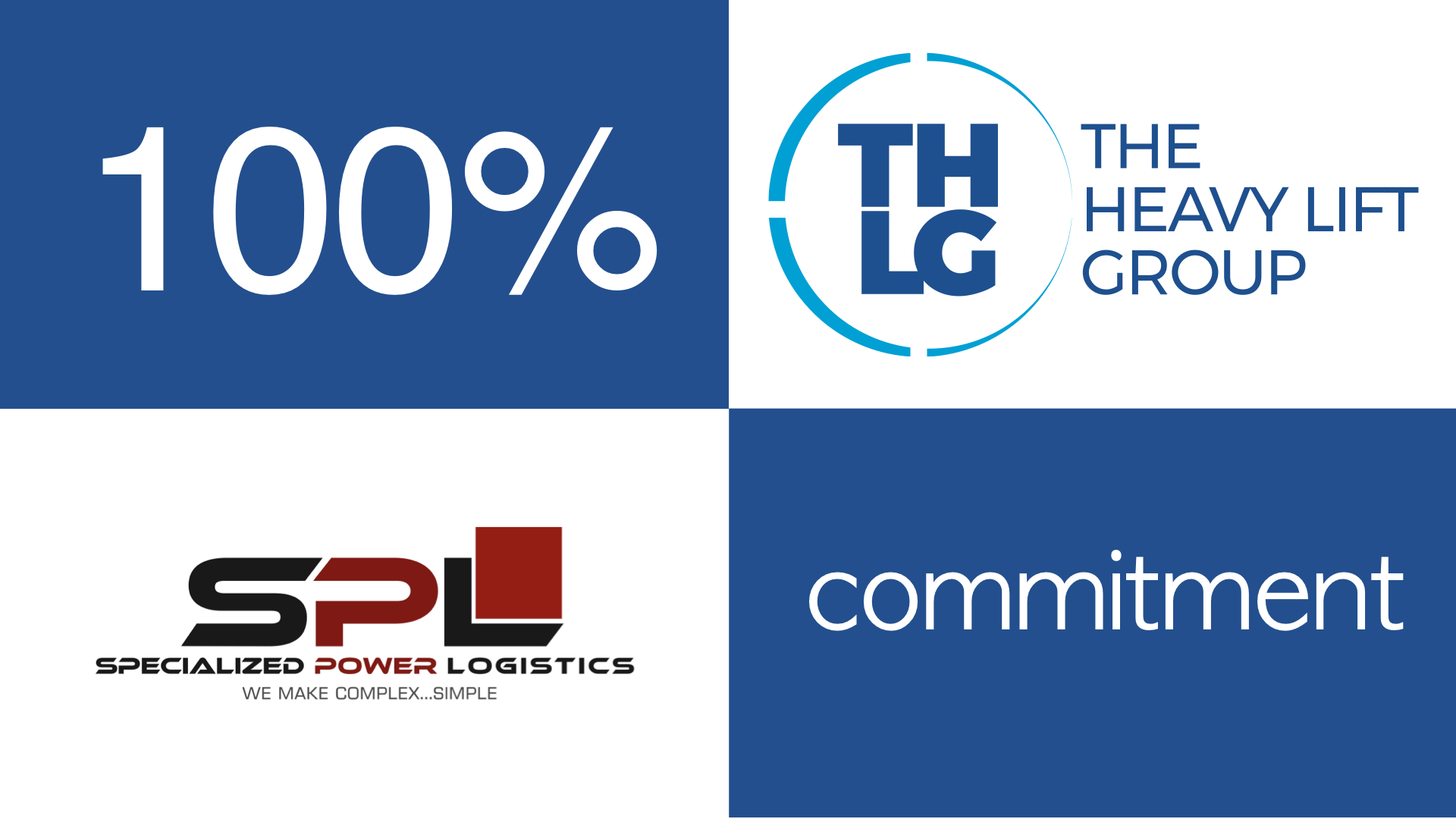

this week we speak with
Richard Flores, President,
Specialized Power Logistics (SPL), USA
![]()
THE "WHO-WHERE-WHAT" CHALLENGE

|
Richard is President of Specialized Power Logistics (SPL) and current shareholder. Previously he has worked for large to mid size forwarders that specialized in project management / cargo. He is married and has two daughters and lives in Houston, TX. |
|
Tell us about SPL. Who owns the company? |
|
Specialized Power Logistics (SPL) started in 2014. The company is owned by Richard Flores and a private investor. I saw an opportunity in the over-dimensional rail sector when working for another company. SPL has handled mostly transformers in the past however we are growing our industry sectors to machinery, pipe, steel, presses, and other project cargo. We look at shipping rail first to see if products can move in the US railway system. If not then we can ship multi-modal through-out North America. |
|
Where are your offices located? |
|
Our operations office is located in Houston, TX. We are able to visit the port of Houston on a daily basis if needed or required by our customers project. Our accounting office is located in Asheville NC that handles all the payables/receivables |
|
What is SPL specialty and service range? |
|
SPL speciality is rail transport. We are able to determine the most cost effective way of shipping via rail. We look at many routes and provide rail clearance to ensure the product is delivered safely. SPL also provides project management and port supervision. We are able to visit sites and ports to ensure your cargo is safely loaded/offloaded. |
|
Tell us about projects you have handled recently. |
|
|
The last project we handled was two 230 mton transformer from Houston, TX port to Millersburg, IA. Each project was approx a month apart. We were contracted to handle this delivery from port to pad. With only 6 weeks lead time SPL received the rail clearance and positioned the railcar a week prior to vessel arrival. SPL was at the port to receive the car direct discharge to a 53 Ft 12 axle railcar. SPL added counterweights due to the CG of the unit and clearance window. The welders followed our AAR securement plan and rail inspection was passed with no issues. The rail transit went via Union Pacific and then interchanged with the Canadian Pacific. We worked with the Canadian Pacific to find a rail siding 2 months prior that would allow our rigger ample space for the operation. The railcar arrived and our subcontracted rigger mobilized and was able to transload the unit to their truck and deliver within the same week. The transformers weighed 492,000 lbs each and were over 19' tall when loaded. An 18-Dolly Dual-Lane Transporter spread the permitted weight of 838,400 lbs out over both lanes. During Transport we had to add in beam extensions and four dollies to cross a bridge and then remove them again on the other side. Then before arrival we found a place to remove eight dollies for a shorter and more versatile wheelbase to enter the substation. Both units were delivered successfully. |
|
How is the market for Rail Project Logistics? |
|
The previous 2 years the market has been very stable with project cargo. Many capital projects were being established and executed. This year has been a whirlwind as many customers have put their projects on hold or cancelled due the pandemic. One of our customers was shipping project cargo from Italy as that was put on hold until the end of 2021. The benefit of the market is that alot of customers are not familiar with rail so we are able to help them and show them that rail is a good alternative to trucking in the US. We strive to lower costs and maximize profits for our customers by shipping via rail. With the pandemic this year we hope that the future for all is safe and healthy. |
|
How long does it take to get a preliminary rail clearance on HL & OOG rail transportation? |
|
This is a hard question. It really depends on the route and the complexity of the project. Another factor is how many railroads are involved. If there are multiple railroads then the clearance has to be approved by each railroad however the originating railroad is the handling carrier to ensure all railroads respond. Usually a simple clearance with one railroad takes around 2 weeks to get a response. For more complex clearances it could take 4-6 weeks to receive a clearance. Also we are working with the railroads to find solutions if a clearance is not approved. We ask questions like where are the fouls? Is the foul a switch that can be removed? A bridge that maybe we can use another type of railcar. So we look at alternatives and work hand in hand with the railroads to provide solutions. |
|
Due to the various railroads in USA, are permitting process the same for each? |
|
Each railroad has its own process but they are similar. The base information like dims/weight is provided however SPL also sends loaded diagrams to the railroad. This shows the railroad how we tend to load/secure the cargo to the railcar. We provide dimensions from the ATR (Above the rail) to the top of the cargo as well as the widest points of the cargo. The width is critical in rail clearance as the clearance windows has maximums that can be cleared due to bridges and tunnels on the route. Also the benefit to rail clearance is that you receive clearance for one year and you can renew the clearance each year. Comparing this to trucking the US states have their own state regulations per each state. So the axle weight can change per state and permit process can change as well. Also truck permits usually expire in a short period and then you have to reapply. Another thing with truck permits is that construction or other factors can re-route your permit which can cause problems when planning on moving over-dimensional projects. Rail clearance is one clearance and you go. |
|
What is the availability of normal rail cars and super heavy duty rail cars? |
|
Usually in the past the very specialized railcars were hard to come by (i.e. 16 axle), however many companies invested in the last 10 years on new cars. This has helped the over all industries to have specialized cars come available when needed. The normal railcars 4 axle to 12 axle are usually available by either TTX or Kasgro with enough pre-plannning ahead. SPL orders our railcars with 2 months in advance, if the customer has provided us with enough lead time. Also there are two main companies in the US to lease railcars from. That is TTX and Kasgro. They both handle the empty railcars and orders. |
|
How is the rail infrastructure on the East Coast with the old bridges and tunnels for Project Cargo? |
|
The rail infrastructure within the US is improving every year. All major class railroads are improving the system the quickest way possible. Which sometimes in our eyes is not the fastest, however most critical bridges have been repaired or replaced, when our projects are determined to move. The clearances however are critical when an improvement or repaired is made. Usually the disconnect is between the clearances and the local operations when repairs are made. If the local operations do not relay that information then this could cause problems. Even an inch or less is critical for our projects, as many times our clients are pushing the clearance envelope as they are building their products bigger and heavier each year. |
|
What made you join the industry? |
|
My mother has been in the industry of transportation since I was born. She worked for several ocean lines and then worked for over 30 years at Hoyer Global which is an iso tank company. She worked her way up to Senior VP of Sales/Marketing With her being a one of the first ladies in the industry she lead the way. I saw this from a young age and it always interested me. Our game on long trips was what type of trailer is that? Or what hazard placard is that? So she was training me at age 10. During college I was presented with an opportunity to move to Mexico to help a freight forwarder open an office and handle a very large account for them. This was my starting point in the industry and ever since I have loved what I do. |
|
What do you like the most about your business? |
|
The thing I like the most is the challenges and people. Working together with people to find a solution has always put a smile on me. It's amazing sometimes the solutions that people can come up with open dialogue. At the end of the day people is what makes this business enjoyable. Being able to call vendors, customers, and THLG members friends is a blessing within. |
|
Who should be approached in SPL for inquiries? |
|
Any rfq should be sent to rfq@shipspl.com, or you can always contact me at richard@shipspl.com |

